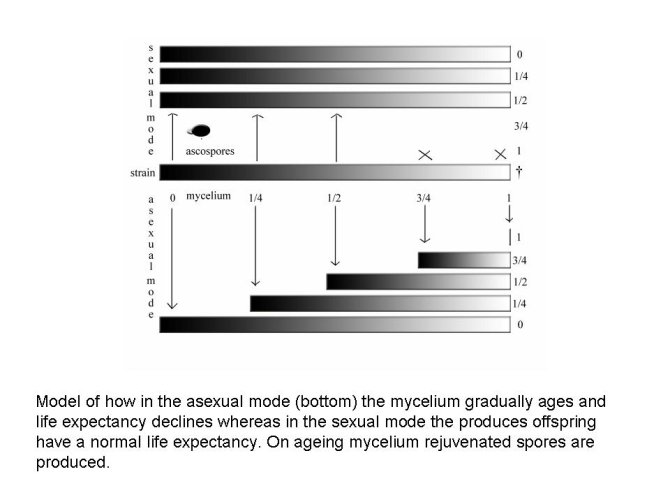Project
Rejuvenation
The filamentous fungus Podospora anserina is a modular organism. In nature the fungus has only short period in which can grow on herbivore dung and form mycelium and obligatory sexual offspring. In general, the fungus lives on rich media only for approximately three weeks in which it gradually senesces, loses its fertility and finally dies.
Description:
Unlike for instance mammals it does not have a specialized germ line: nuclei and mitochondria throughout the mycelium, may end up in the offspring as long as the mycelium is still capable of producing offspring. During its lifespan the number of produced fruiting bodies and spores gradually declines. The senescing mycelium gradually loses its vitality, but spores formed on a senescing mycelium show rejuvenated and have on average a normal life expectancy. How this rejuvenation of spores works is the subject for this study.

Used skills:
microbiological and molecular biology skills, some statistical analysis to interpret the results.
Requirements:
Molecular and Evolutionary Ecology (GEN20304) and Genetic Analysis Tools and Concepts (GEN30306) are good preparations.
Reference:
Silliker ME, Monroe JA, Jorden MA 1997 Evaluation of the efficiency of sexual reproduction in restoring Podospora anserina mitochondrial DNA to wild type. Curr. Genet. 32: 281-286;